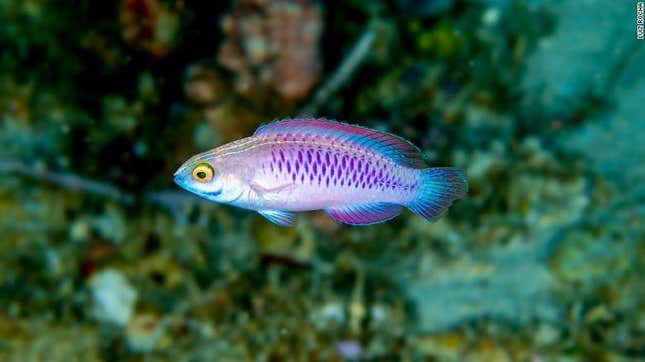A previously unknown species of fairy wrasse fish found in a deep, unexplored reef off the coast of Tanzania is creating as much excitement among reef researchers as Marvel’s Black Panther did with moviegoers.
Discovered more than 200 feet beneath the ocean’s surface in the dimly lit coral reefs of Zanzibar, the newly discovered species of fairy wrasses are distinct for their purple pigmentation which is said to retain color even when preserved for research, unlike other fish species.
Yi-Kai Tea, lead author of the study published in the journal ZooKeys, says the team chose to name the newly discovered fairy wrasse in honor of the Black Panther story given “the secretive and isolated nature of these unexplored African reefs” which mirrors characteristics of fictional Wakanda, the utopian but hidden home of the Marvel character. With vibranium, the vital resource which powers Wakanda’s technological advancement, and Black Panther’s suit known for its purple tinge, the newly found species have been named Cirrhilabrus wakanda, or “vibranium fairy wrasse.”

A team comprising of deep-diving scientists from the University of Sydney and California Academy of Sciences’ Hope for Reefs initiative examined DNA, scales, fin rays and body structure of the fish which determined that the newly discovered fairy wrasses in Tanzania are different from other species already identified in the western Indian Ocean as well in the Pacific.
The species has remained undiscovered until now, scientists believe, due to the remote nature of its dimly lit home reef which is below recreational diving limits. The discovery of the vibranium fairy wrasse will also prove vital for other species across deep-lying coral reefs (referred to as “twilight zone” reefs) as the Hope for Reefs initiative steps up its campaign to explore the little-known habitats to ensure their protection and preservation.
It’s a vital task as scientists have recently determined that, despite typically lying up to 500 feet below ocean level, twilight zone reefs are “still potentially impacted by underwater development, such as cabling and anchoring, and need to be protected for future generations.”
Sign up to the Quartz Africa Weekly Brief here for news and analysis on African business, tech and innovation in your inbox
